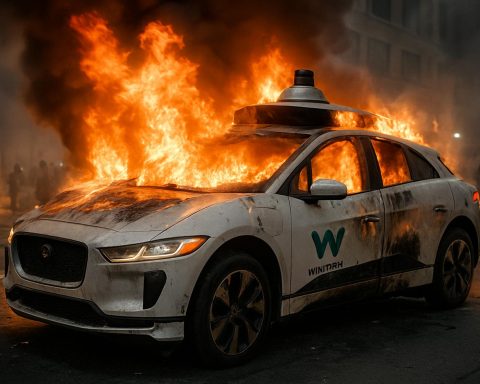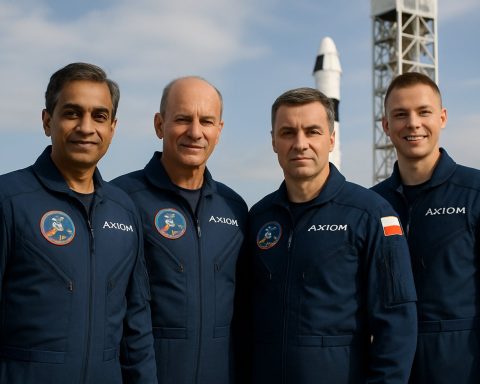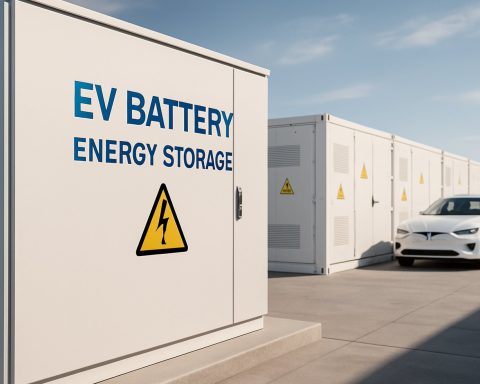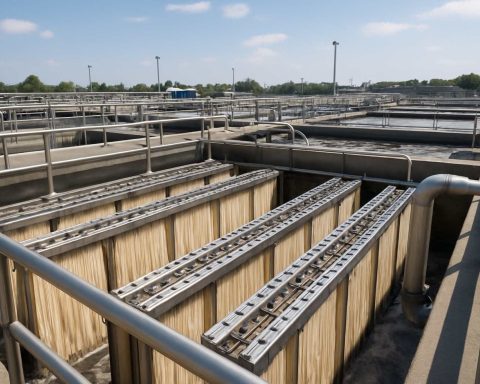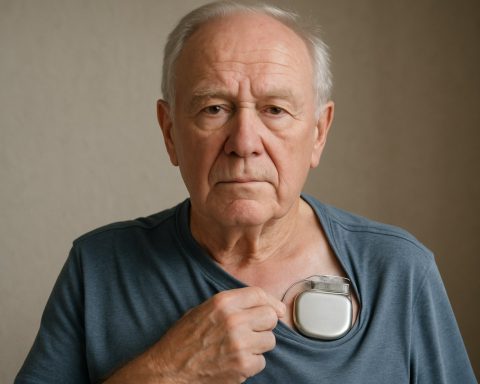- A drone carrying a warhead crashed into Chernobyl’s protective shell, raising fears of potential nuclear hazards.
- The International Atomic Energy Agency (IAEA) confirmed steady radiation levels despite the incident.
- The incident at Chernobyl reignites tensions between Kyiv and Moscow, both blaming each other.
- The timing coincides with the Munich Security Conference, highlighting the fragility of global peace efforts.
- President Zelenskyy describes the high-stakes nature of the incident, impacting the structure that secures reactor No. 4.
- Concerns about power supply disruptions to Ukraine’s nuclear facilities add to the complex situation.
- Chernobyl remains a symbol of past nuclear mistakes and the risks posed by ongoing conflicts.
On the scarred landscape of Ukraine, where history’s echo merges with a tense present, the ghosts of Chernobyl were once again stirred. A drone, laden with a warhead, collided with Chernobyl’s protective shell on Friday, reigniting fears of nuclear peril. Though the impact didn’t pierce the protective outer layer, it underscored the volatile dangers lurking beneath the surface of ongoing conflict.
The U.N.’s vigilant eye, the International Atomic Energy Agency (IAEA), assures us of steady radiation levels, yet the unsettling incident casts a long shadow over global conversations. With accusations flung from both Kyiv and Moscow, words now echo as weapons in a war of narratives. Ukraine pinpoints Russia, while Moscow rebuffs, hinting at a crafted deception. Amidst the din, clarity remains elusive.
The timing of this incident couldn’t be more precarious. As world leaders converge at the Munich Security Conference, aspirations of peace rub shoulders with this unsettling reminder of what’s truly at stake. The head of the IAEA, Rafael Mariano Grossi, voices a chilling reminder of the tenacious risks posed to nuclear safety amidst the clash.
Ukraine’s President Zelenskyy paints a vivid image of the intrusion—the drone’s impact on the labyrinthine structure encasing the infamous reactor No. 4. This metallic behemoth, raised at the staggering cost of €2 billion, stands as a technological triumph over the reckless past, designed to hold chaos at bay.
But what about tomorrow? As power systems buckle under this continuing war, the specter of disruption multiplies. Previous power cuts to Ukraine’s nuclear facilities amplify fears of overheating, though experts dismiss immediate threats. Still, the specter of these incursions ignites panic and undermines fragile pathways to peace.
As nations ponder the path forward, Chernobyl’s resilient shell serves as both a monument to humanity’s past errors and a potent symbol of its restless future.
Drone Strike on Chernobyl: Unveiling the Nuclear Crisis Looming Beyond the Surface
How-To Steps & Life Hacks for Ensuring Nuclear Safety
1. Establish a Transparent Monitoring System: Strengthen international cooperation for real-time radiation monitoring networks to provide public access to radiation levels.
2. Enhance Security Protocols: Implement advanced drone detection and neutralization technologies around nuclear facilities.
3. Regular Structural Assessments: Conduct frequent and rigorous assessments of protective structures like the Chernobyl sarcophagus to ensure their integrity against potential breaches.
4. Community Preparedness Programs: Educate locals and nearby regions about emergency evacuation plans and radiation safety measures.
Real-World Use Cases
– Disaster-Resilient Infrastructure: The protective shell at Chernobyl can serve as a model for other nuclear sites worldwide to enhance their resilience against conflict and natural disasters.
– Innovative Drone Use: Militaries and governments can utilize drones for peaceful purposes, such as monitoring radiation levels from a safe distance during potential crises.
Market Forecasts & Industry Trends
The global market for nuclear power plant equipment is expected to reach $36.5 billion by 2030, reflecting a robust demand for safety upgrades and monitoring technologies, driven by geopolitical tensions and environmental concerns.
Reviews & Comparisons
– Nuclear Safety Protocols: The French EPR reactors are often cited for their multiple redundant safety systems compared to older Soviet-era designs like Chernobyl’s RBMK reactor.
– Drone Defense Systems: Companies like DroneShield offer effective counter-drone solutions compared to traditional military systems, emphasizing real-time adaptability and user-friendliness.
Controversies & Limitations
– Political Tensions: The drone incident at Chernobyl highlights the intricate web of geopolitical alliances and mistrust, limiting collaborative efforts in nuclear safety.
– Technological Oversight: Over-reliance on technology without constant updates and human oversight might lead to unforeseen vulnerabilities.
Features, Specs & Pricing
– Chernobyl Sarcophagus: Costing €2 billion, its primary feature is robust radiation containment designed to last 100 years, significantly reducing radiation leakage.
– DroneShield Technologies: These systems are priced at around $30,000 per unit and include radar, RF detection, and camera modules for comprehensive unmanned aerial vehicle defense.
Security & Sustainability
– Security Enhancements: More sophisticated, multilayered digital and physical security is essential for nuclear sites, integrating AI-driven surveillance with traditional manpower.
– Sustainability Initiatives: Adoption of renewable energy within nuclear facility operations to minimize dependency on vulnerable power grids.
Insights & Predictions
– Increasing Global Scrutiny: Expect more frequent international audits and safety assessments of nuclear facilities, particularly in conflict zones.
– Rise in Nuclear Safety Innovation: Anticipate breakthroughs in materials science, like self-healing concrete and advanced alloys, to bolster nuclear containment structures.
Tutorials & Compatibility
– Radiation Monitoring Systems: Training on the use of handheld Geiger counters and integration with smartphone apps can empower civilians to independently verify safety claims.
– Drone Defense Operations: Basic tutorials on drone threat identification and response specific to nuclear regions are becoming increasingly crucial.
Pros & Cons Overview
Pros:
– The Chernobyl sarcophagus’ superiority in containing nuclear material.
– Drones offer efficient non-intrusive environmental monitoring.
Cons:
– Potential for technology failure and geopolitical misuse.
– High cost implications for global nuclear infrastructure upgrades.
Actionable Recommendations
1. Engage with the Community: Participate in local safety drills and stay informed on national nuclear safety protocols.
2. Monitor Radiation Levels: Use publicly available resources to monitor local radiation levels (IAEA’s platforms).
Quick Tips
– Stay Informed: Follow credible news sources and organizations like the International Atomic Energy Agency for updates on nuclear safety.
– Empowerment Through Knowledge: Attend workshops or online courses about nuclear safety and disaster readiness.
This incident at Chernobyl serves as a grim reminder of how fragile our advancements can be. Investing in collaborative global safety measures and technologies will be critical in mitigating future threats and ensuring peace and stability.




